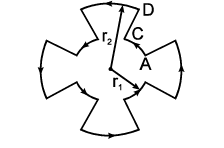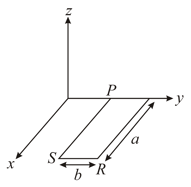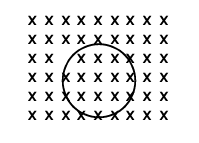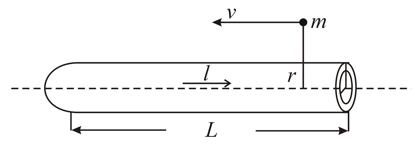Embibe Experts Solutions for Chapter: Magnetic Effect of Current, Exercise 4: Exercise - 4
Embibe Experts Physics Solutions for Exercise - Embibe Experts Solutions for Chapter: Magnetic Effect of Current, Exercise 4: Exercise - 4
Attempt the free practice questions on Chapter 25: Magnetic Effect of Current, Exercise 4: Exercise - 4 with hints and solutions to strengthen your understanding. Alpha Question Bank for Engineering: Physics solutions are prepared by Experienced Embibe Experts.
Questions from Embibe Experts Solutions for Chapter: Magnetic Effect of Current, Exercise 4: Exercise - 4 with Hints & Solutions
A particle of mass and charge is moving in a region where uniform, constant electric and magnetic & fields are present, & are parallel to each other. At time the velocity of the particle is perpendicular to . (Assume that its speed is always , the speed of light in vacuum). Find the velocity of the particle at time . You must express your answer in terms of the vectors , & and their magnitudes and .
A current of flows around a closed path in a circuit which is in the horizontal plane. The circuit consists of eight alternating arcs of radii and . Each arc subtends the same angle at the centre.
(i) Find the magnetic field produced by this circuit at the centre.
(ii) An infinitely long straight wire carrying a current of is passing through the centre of the given circuit vertically with the direction of the current being into the plane of the circuit. What is the force acting on the wire at the centre due to the current in the circuit? What is the force acting on the arc and the straight segment due to the current in the central wire.

A rectangular loop made from a uniform wire has length , width and mass . It is free to rotate about the arm , which remains hinged along a horizontal line taken as the -axis as shown in figure.Take the vertically upward direction as the axis. A uniform magnetic field exists in the region. The loop is held in the plane and a current I is passed through it. The loop is now released and is found to stay in the horizontal position in equilibrium.

(a) What is the direction of the current in ?
(b) Find the magnetic force on the arm .
(c) Find the expression for in terms ofand .
A ring of mass and radius is rotated in uniform magnetic field which is perpendicular to the plane of the loop with constant angular velocity . Find the net ampere force on the ring and the tension developed in the ring if there is a current i in the ring. Current and rotation both are clockwise.

A square loop of wire of edge a carries a current . Magnetic induction for a point on the axis of the loop at a distance from its centre is , then find value of .
A positive point charge of mass , kept at a distance (in the same plane) from a fixed very long straight current is projected normally away from it with speed . Find the maximum separation between the wire and the particle.
Consider a solid sphere of radius and mass which has a charge distributed uniformly over its volume. The sphere is rotated about a diameter with an angular speed . Find magnetic moment of the sphere.
A long non-magnetic cylindrical conductor with inner radius a and outer radius carries a current . The current density in the conductor is uniform. Assume end effects can be neglected.

(a) Prove by the Biot-Savart law that the magnetic field, if any, at a point is always tangential to the circle passing through the point, with the centre of the circles on the axis of the cylinder.
(b) Find the magnetic field due to the current as a function of radius.
(i) inside the hollow space (ii) within the conductor (iii) outside the conductor
(c) A beam of particles, each with positive charge and mass travels with initial velocity anti-parallel to the direction of the current. Assume that the length of cylinder is . Find the deflection of a particle as a function of its initial distance r from the axis if when it goes from one end to other end. You can assume that the velocity is high enough such that the velocity is constant and the deflection is small.
